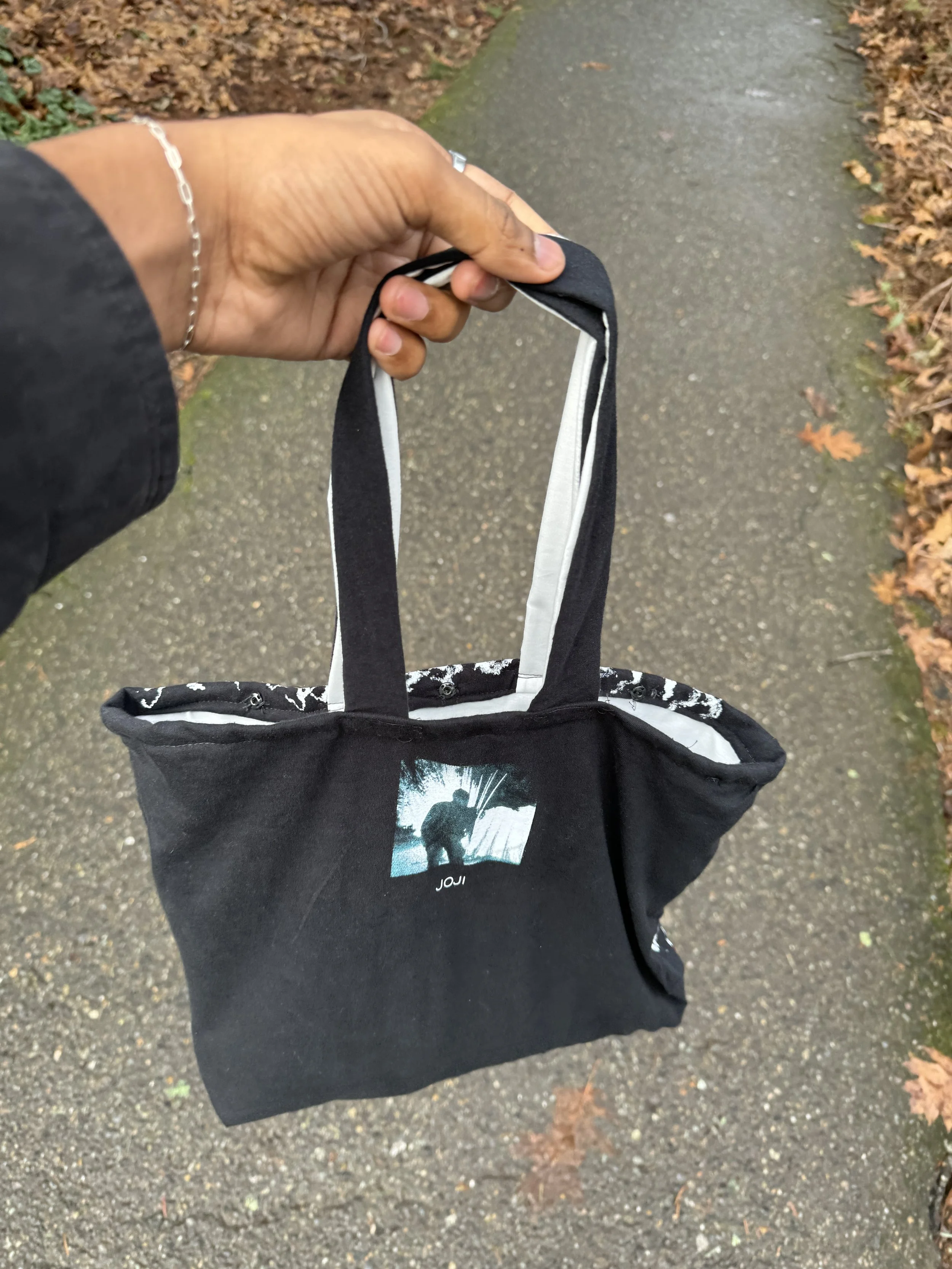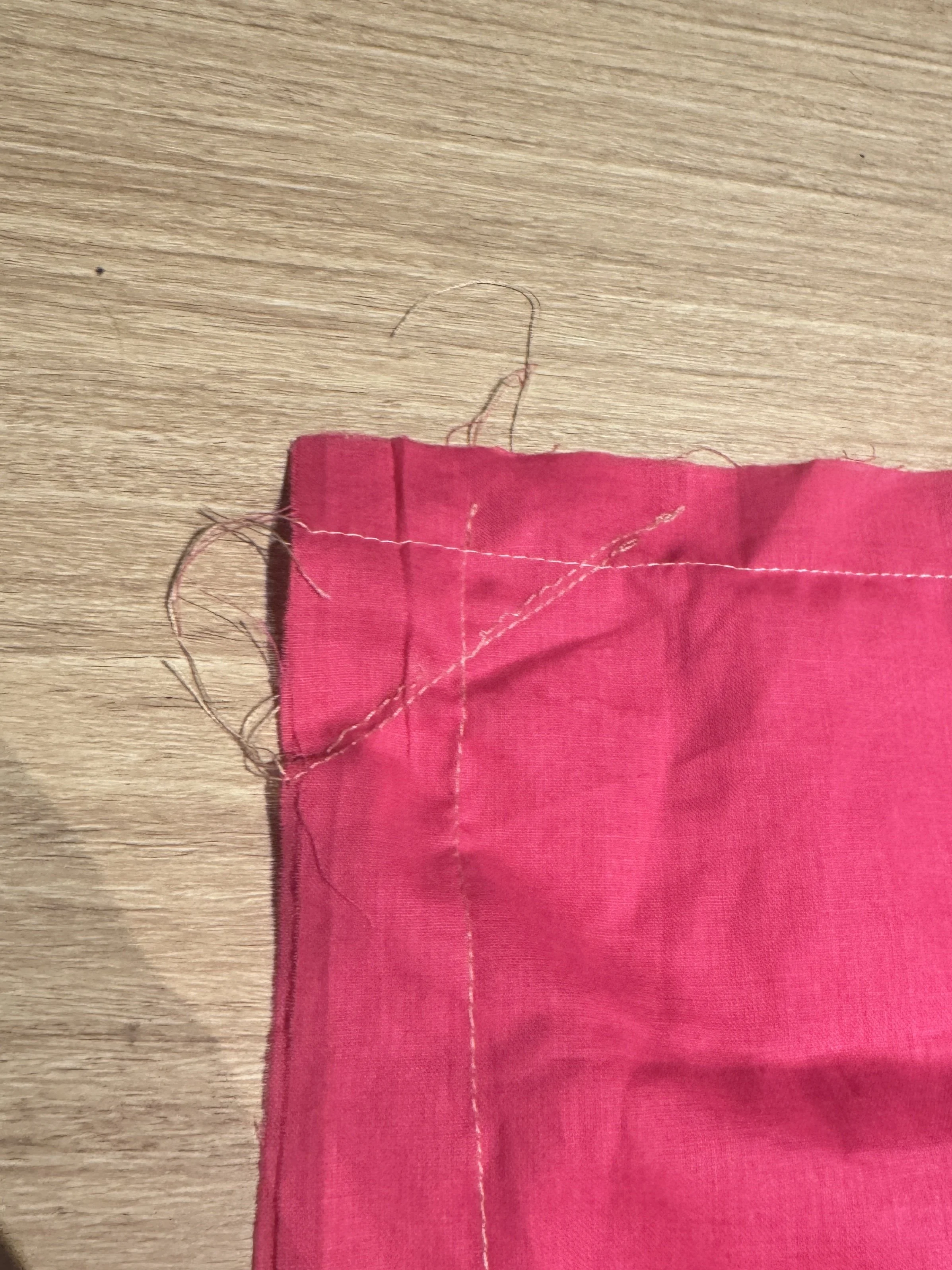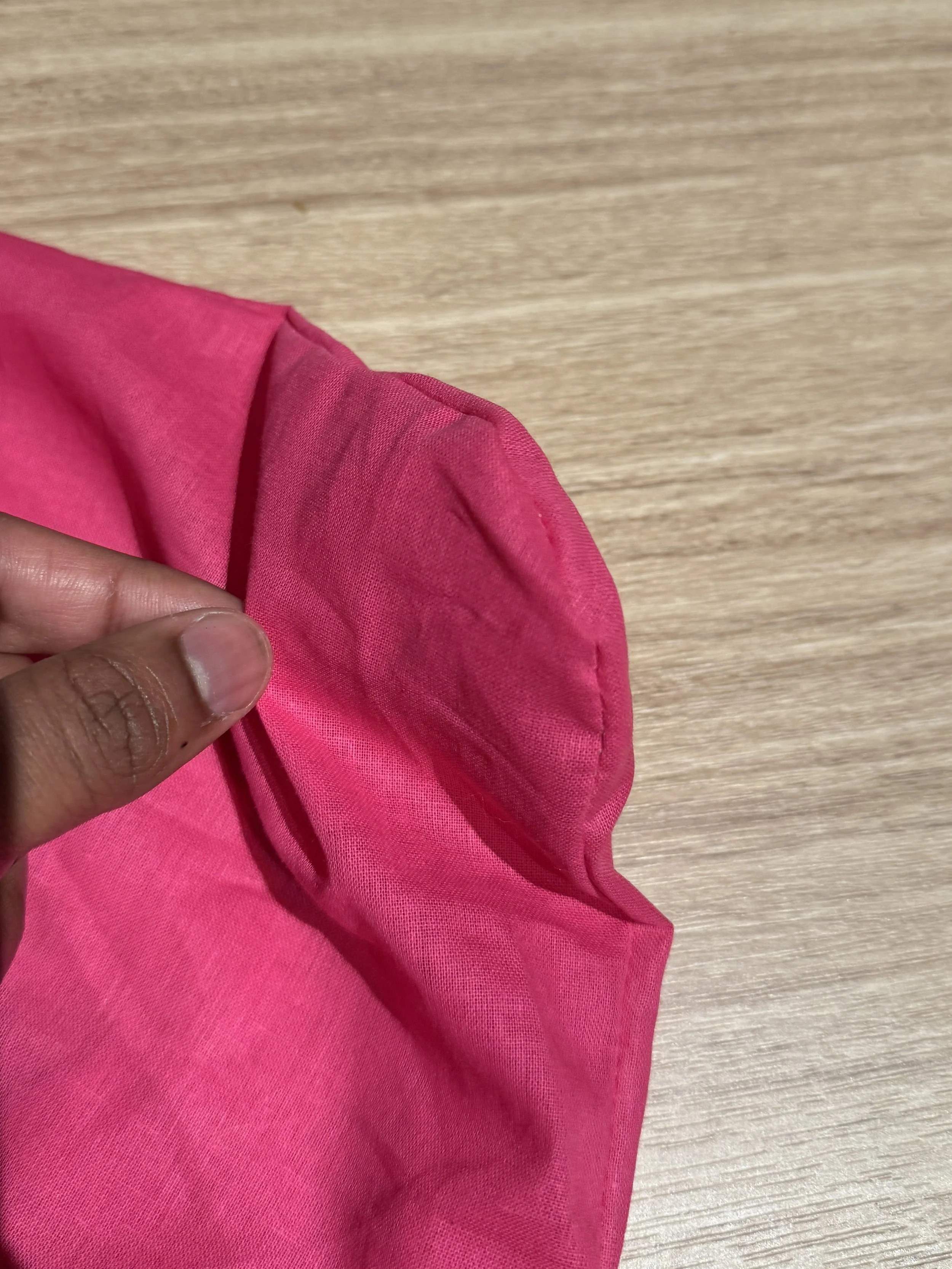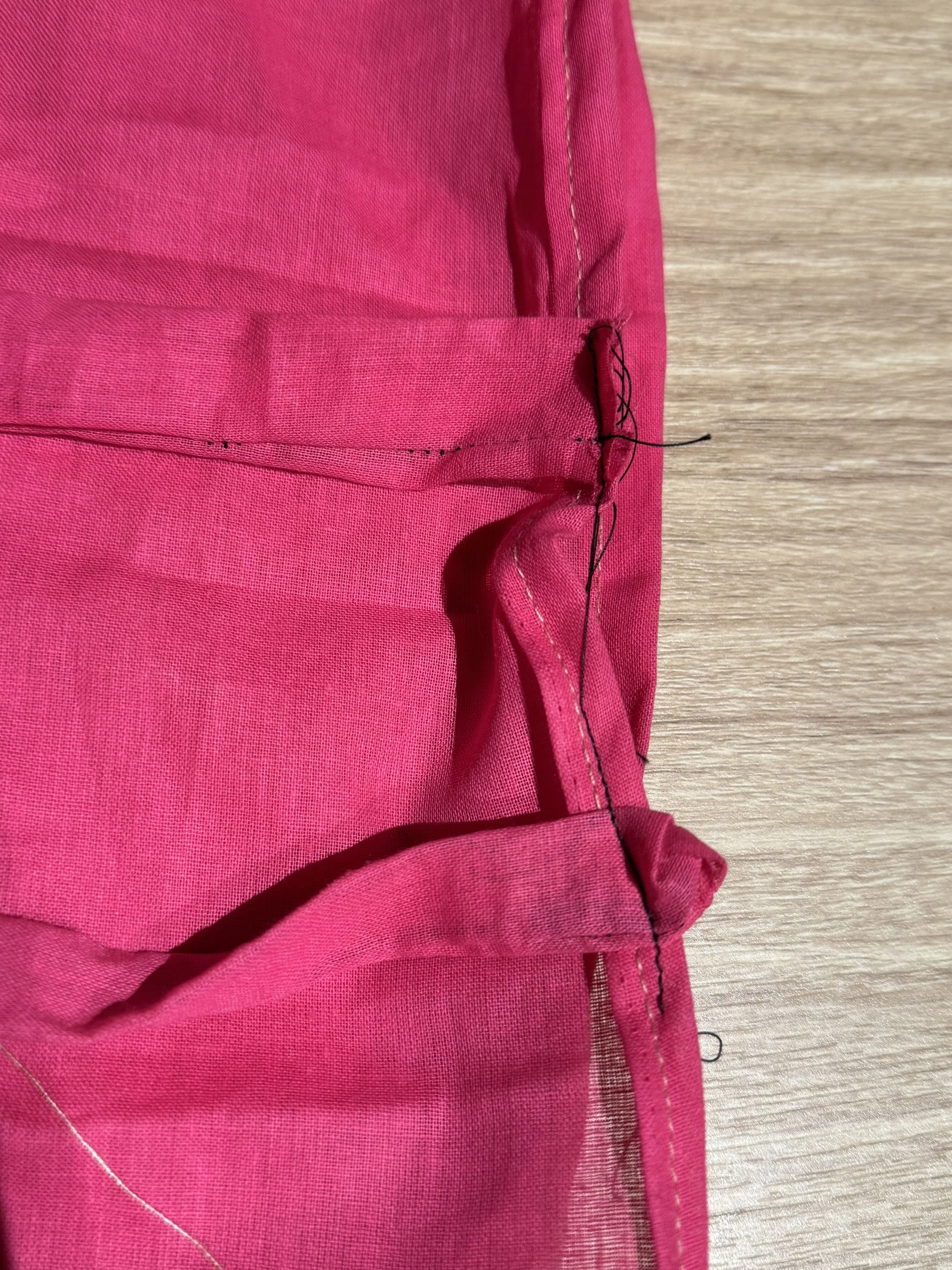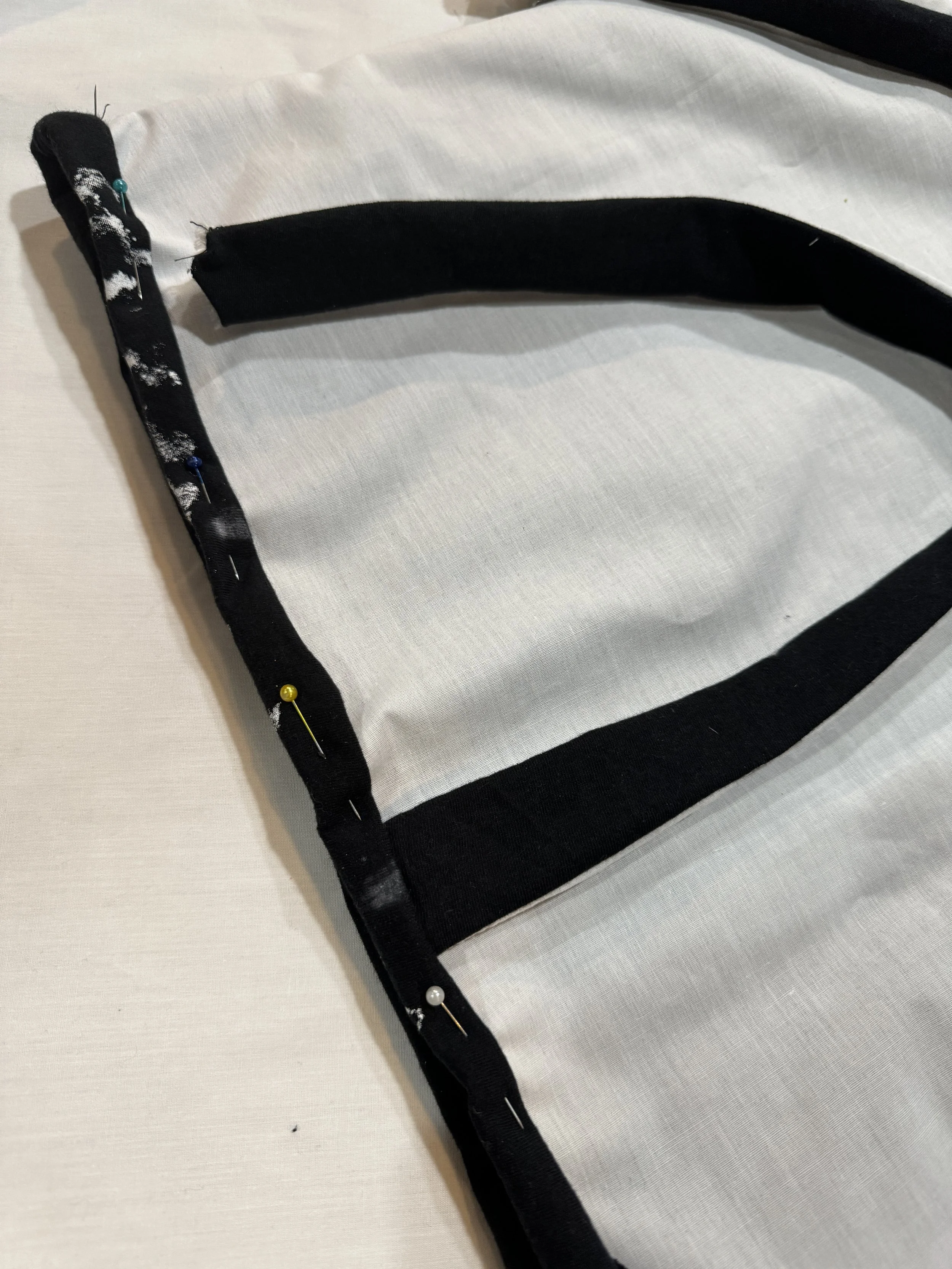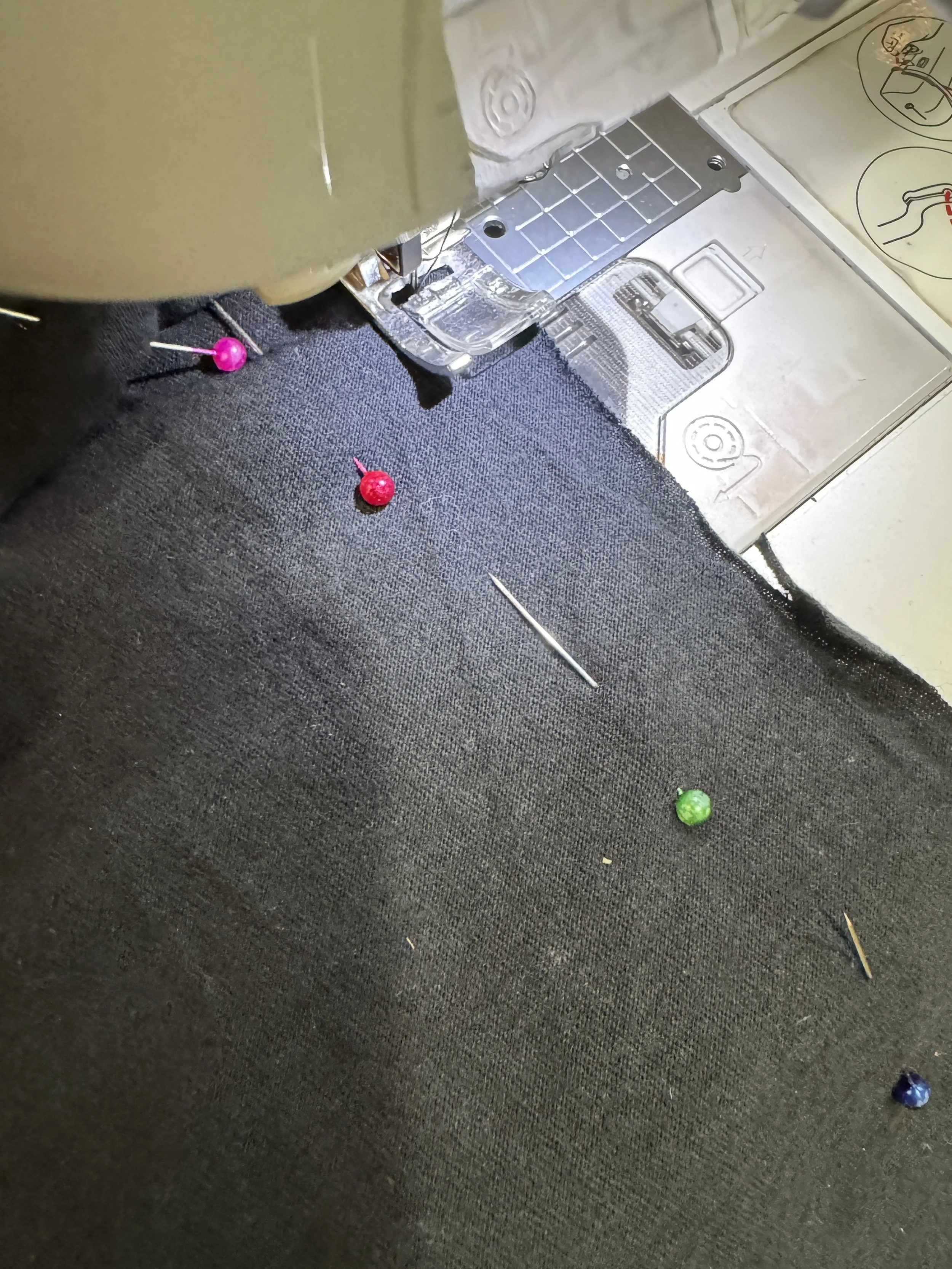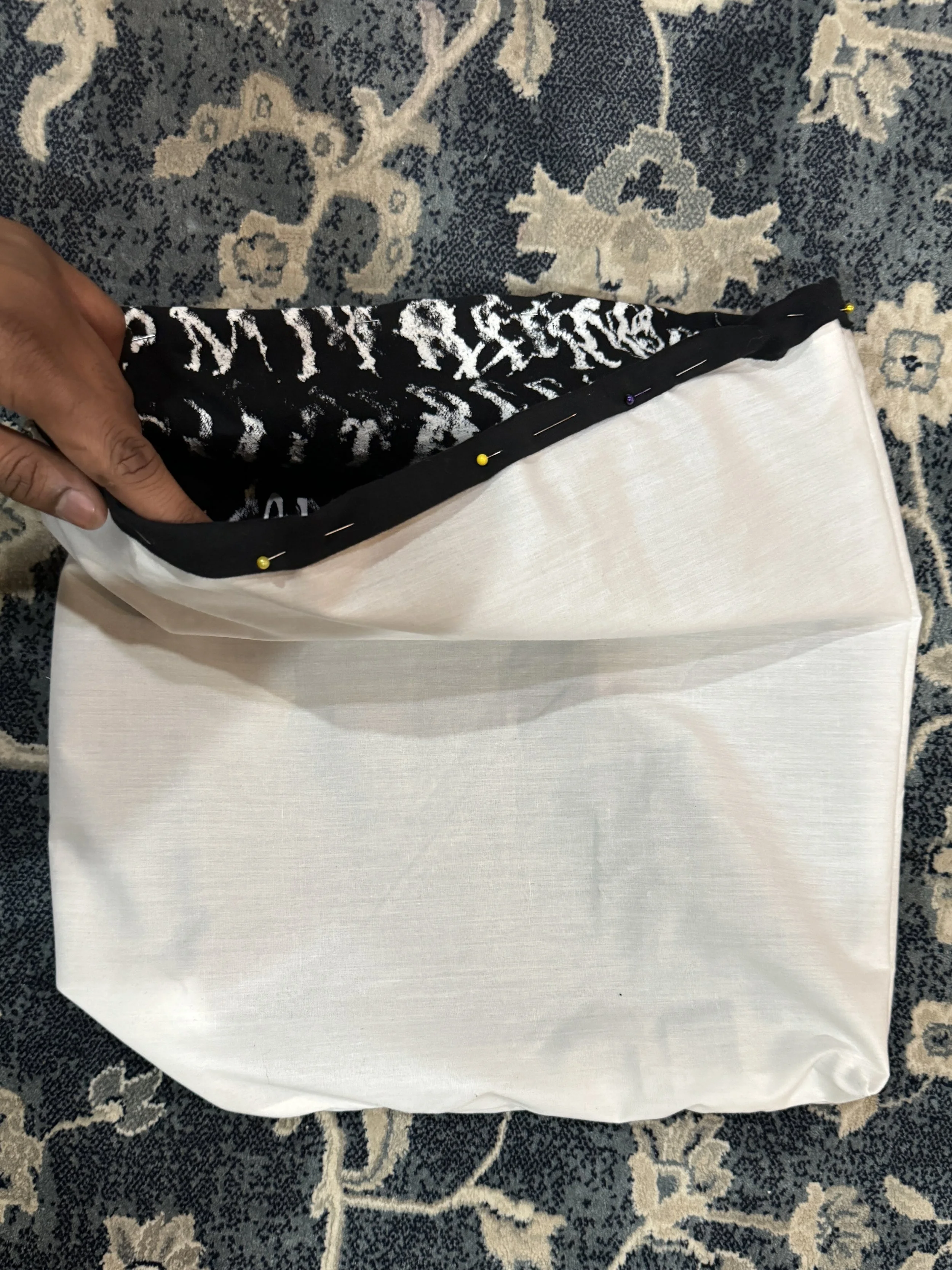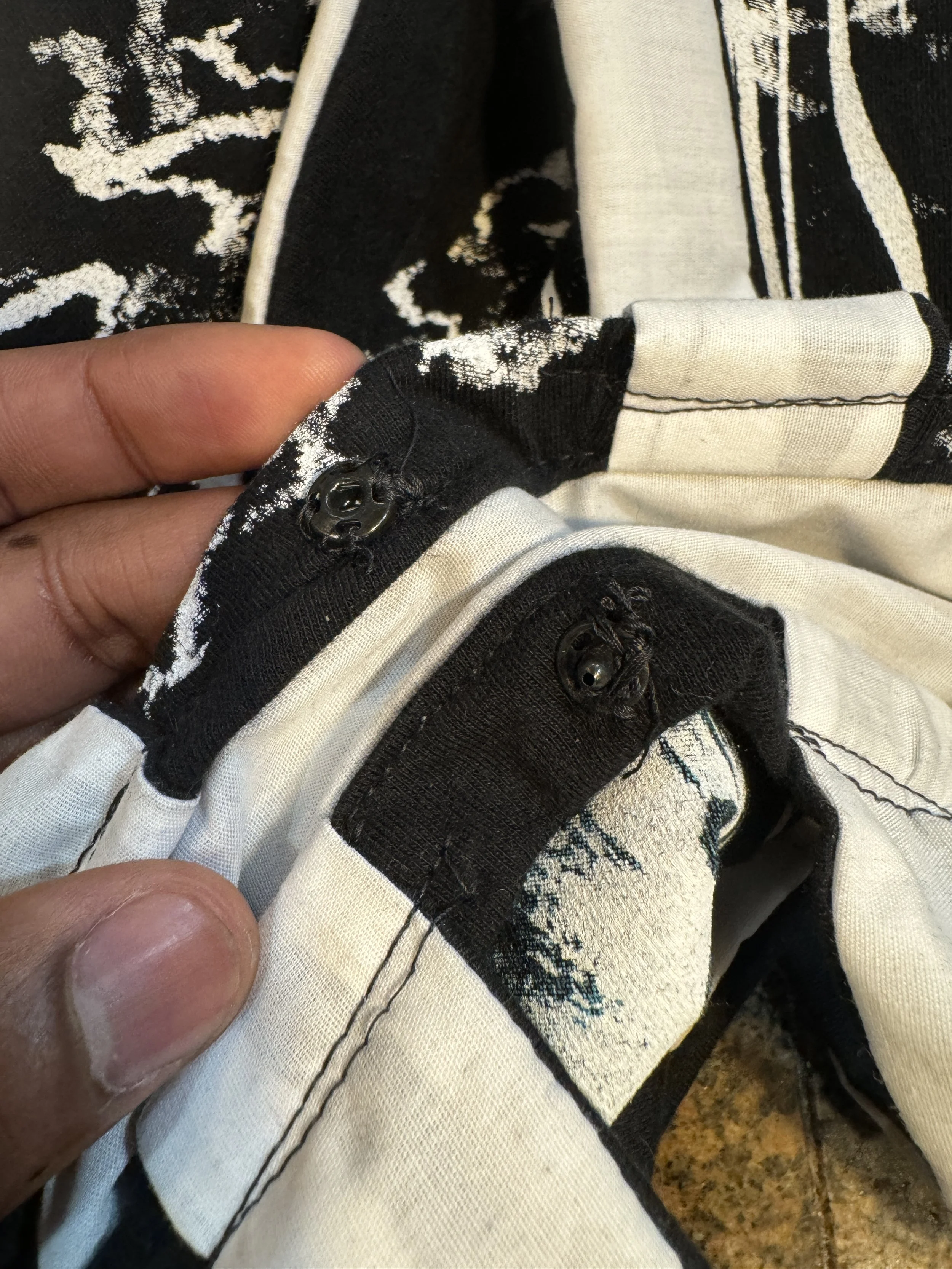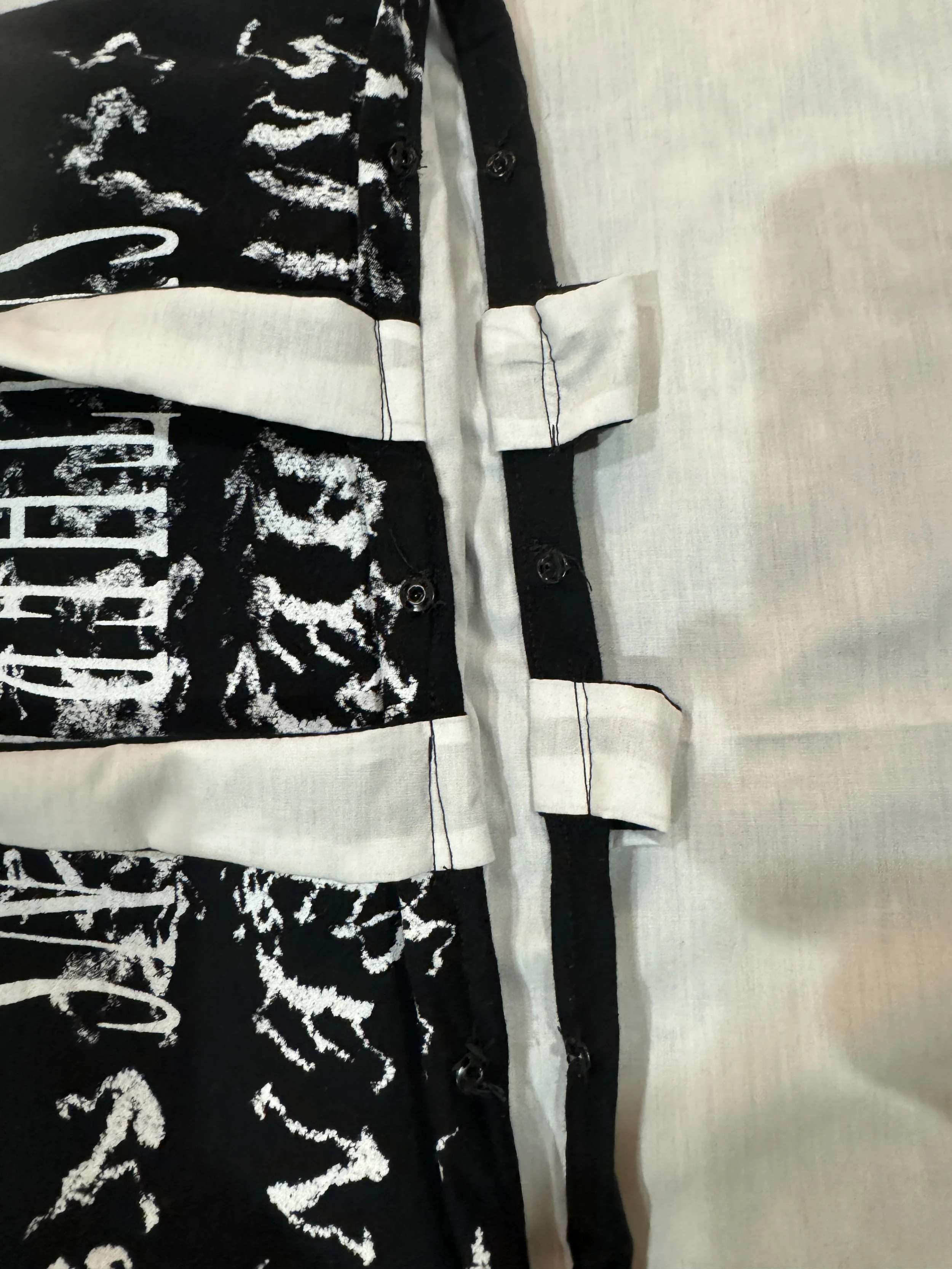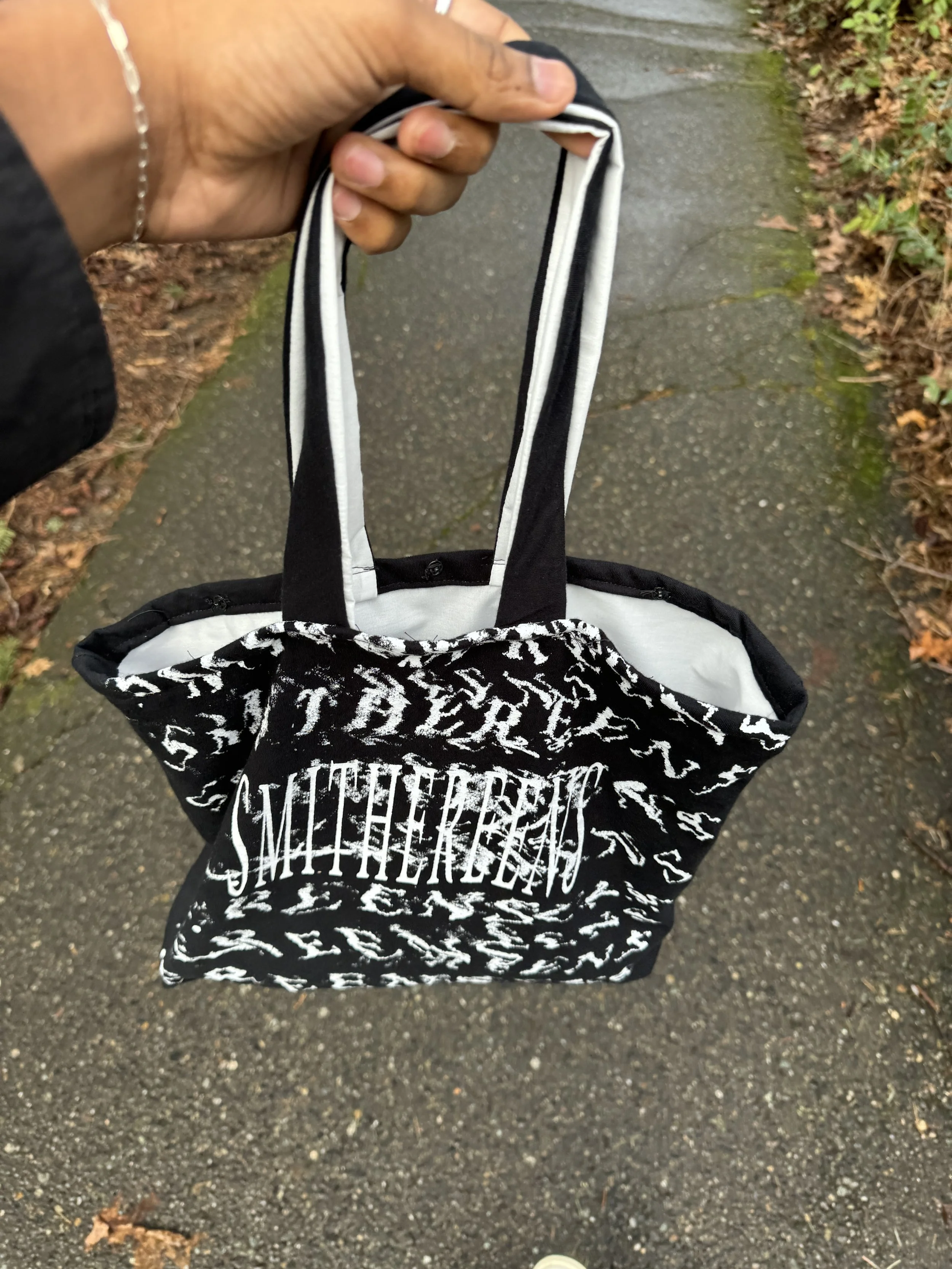Soft Goods Construction: Tote Bag
Jan 28, 2024 • 7 minute read
For this assignment, I utilized a sewing machine to construct a physical object out of fabric and other materials. The device had to be a small tote bag that could carry various items and be made out of some kind of flexible fabric/material while using a fastening mechanism. To begin my design process, I started drawing low-fidelity sketches before creating a muslin prototype. I wanted to practice using the sewing machine and various stitching techniques before working with my final set of materials.
YouTube Tutorial
Initial Testing
I first created a muslin prototype to understand how to load/use the sewing machine. This gave me room to mess up and also practice various stitching techniques.
Muslin Prototype
I learned two key findings from the muslin prototype that I incorporated into my final design.
The first was about the corner stitching. I didn't bend the corners at a 45-degree angle with my initial prototype before stitching it. As a result, the stitch went straight across and created a rounded bottom that wasn’t wide. This would be detrimental in the real bag as it wouldn’t be able to support as much weight and didn’t look visually pleasing.
Incorrectly stitched base corners
The second was for the handle area. After cutting the long strands of handle, when I attached it to the bag I stitched it on on top of the existing fold. While this worked, it had a similar problem as the corner stitching in which maximum load capacity became a concern as well as visual appeal. In my final prototype, I made sure that I tucked the handle strands into the initial fold before making a final stitch.
Final Prototype
With my final prototype, I decided to use an old concert t-shirt as the primary material. This would allow me to upcycle a product I previously owned and save time designing something with visual appeal. I would also use a layer of muslin to line the t-shirt for more structural integrity.
Overall, this exercise helped teach me how to use a sewing machine and prototype with soft goods. Specifically, I was able to understand the product’s:
Desirability - This tote bag can be used to store a variety of items and has a unique visual appeal.
Feasibility - The tote bag was constructed with a t-shirt, a piece of fabric, and thread. With the guidance of the YouTube tutorial, it is very feasible to recreate different versions of it, even for beginners.
Usability - Users can intuitively use the press buttons to fasten the tote bag closed and with more improvements regarding its accessibility, could be used by even wider populations.
Impact - The use of a t-shirt in my design promotes sustainability and upcycling clothing. This further encourages design to benefit our environment while creating useful products.
Design
When drawing my low-fidelity sketches, I debated what material the tote bag should be constructed out of and came up with the following options: muslin, old t-shirt, and canvas fabric. Out of these options, the t-shirt stood out to me the most because it incorporated upcycling/sustainability as well as visual appeal.
Only being familiar with working with muslin, I researched online and came across the following YouTube video. This guided my construction with t-shirt material.
Initial t-shirt used for construction
Handle stitching on muslin prototype vs final design
T-shirt outline cut out and placed on muslin for tracing second layer
When stitching the bag together, it was essential to use positioning needles. This kept the t-shirt material from constricting while also holding together both layers of the tote bag. It also allowed the handle straps to be tucked in properly.
Use of positioning pins
Lastly, I incorporated press buttons and placed three of them horizontally on the top of the bag. This would allow for a quick and intuitive fastening mechanism that didn’t affect the overall visual appeal.
Press button fastening mechanism
Analysis
Once I finished constructing my final prototype, I presented my creation to fellow peers to see what features could be improved. I noticed that everyone found my tote bag visually appealing and appreciated the softness/quality of using a t-shirt as my base material. The double-lining with muslin also offered structural stability that made it feel solid and a good size to fit lots of items.
In terms of improvements, one piece of feedback was regarding the handle length. Because I used the width of the t-shirt I was limited in size and it could be difficult for users with larger arms to fit the tote bag around their shoulders comfortably. Additionally, the press buttons were small and camouflaged with the black lining. This raised accessibility concerns for those with lower dexterity, so larger buttons that contrast would be a more helpful fastening device.
Final tote bag design

